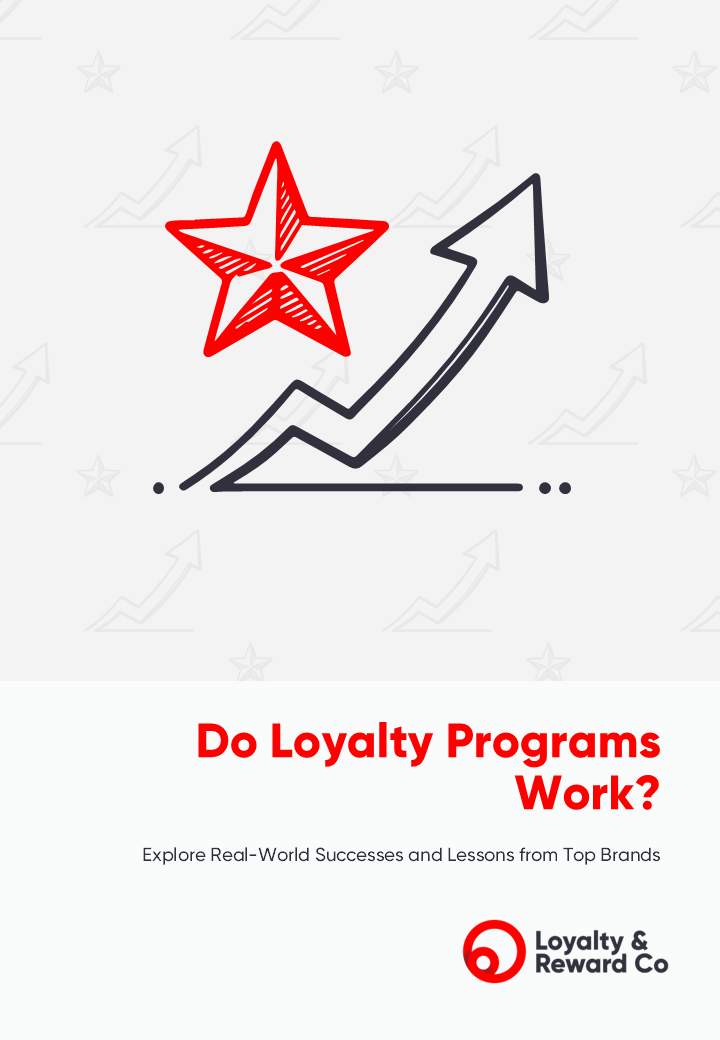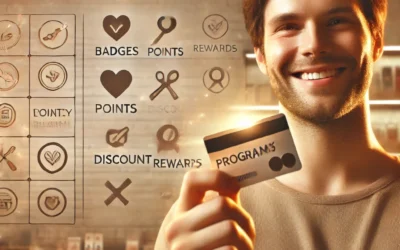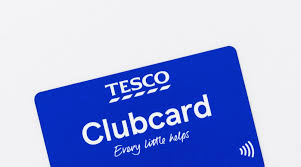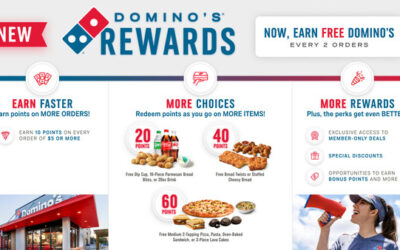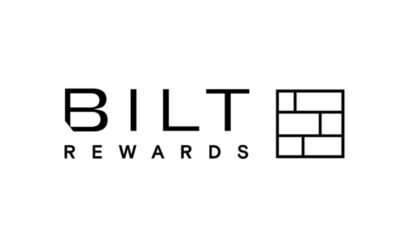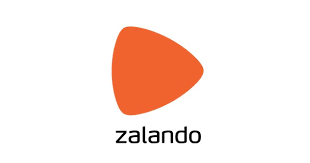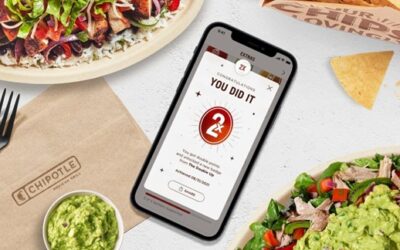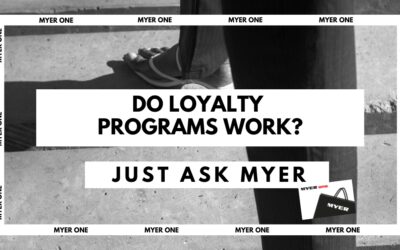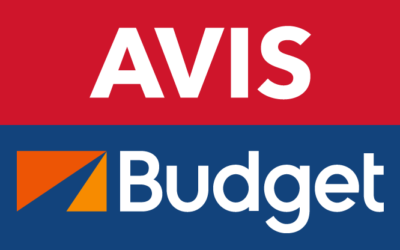Do Loyalty Programs Work?
Explore Real-World Successes and Lessons from Top Brands
Discover how leading companies across industries are leveraging loyalty programs to drive customer engagement and retention. Our loyalty consultants break down what works, what does not, and the key takeaways from each brand’s approach.
Quick links
Case studies of loyalty programs that work
Do Loyalty Programs Work? Just Ask Disney+
Disney has emerged as a major player in the streaming services industry with Disney+. Most interestingly, the entertainment giant has turned its streaming service...
Do Loyalty Programs Work? Just ask Costa Coffee
In attempting to answer the question ‘Do loyalty programs work?”, this article explores Costa Club, examining key performance indicators to determine the success...
Do Loyalty Programs Work? A review of scientific evidence
Loyalty programs have become a cornerstone of modern marketing strategies, prompting businesses to invest heavily in these initiatives. However, a critical...
Do Loyalty Programs Work? Just Ask Bath & Body Works
My Bath & Body Works Rewards, launched nationally in the US in 2022, has rapidly become a standout example of a successful loyalty program. The program has not...
Do Loyalty Programs Work? Just ask Tesco
Do loyalty programs work? Just ask Tesco
Do Loyalty Programs Work? Just ask Domino’s Pizza
In the quick service restaurant (QSR) industry, having a loyalty program strategy is often seen as a hygiene factor. Something that needs to be in place just to be...
Do Loyalty Programs Work? Just ask Bilt Rewards
Cost of living pressures doesn’t mean a loyalty program cannot be valuable to members. Bilt Rewards offers a unique loyalty program that rewards members with...
Do Loyalty Programs Work? Just ask McDonalds
MyMcDonald's Rewards, launched by the global fast-food giant, stands out as a prime example of an effective loyalty program that is reshaping customer engagement....
Do Loyalty Programs Work? Just ask Zalando
Zalando, a leading European online fashion retailer, has demonstrated the effectiveness of subscription-based loyalty programs through Zalando Plus. This program...
Do Loyalty Programs Work? Just ask ASDA
In today's fiercely competitive supermarket industry, loyalty programs have become a critical success factor. ASDA’s loyalty program, ASDA Rewards, has injected...
Do Loyalty Programs Work? Just ask Revolution Beauty
In the retail cosmetics industry, an effective loyalty program strategy is critical to drive customer acquisition, spend and retention. Revolution Beauty...
Do Loyalty Programs Work? Just ask Chipotle
In the fast-casual dining industry, Chipotle has earned a reputation not only for its famous burritos but also for revolutionising customer loyalty. The restaurant...
Do Loyalty Programs Work? Just ask Ulta Beauty
Ulta Beauty has delivered exceptional results with its Ulta Beauty Rewards program. This innovative loyalty program has played a significant role in the company's...
Do Loyalty Programs Work? Just ask Myer
Loyalty programs have become a crucial component of customer retention strategies and a way to differentiate in a competitive landscape. Myer One, the loyalty...
Do Loyalty Programs Work? Just ask SAS EuroBonus
Sometimes loyalty programs work so well they are viewed as anti-competitive. Just ask Scandinavian Airlines or SAS (short for Scandinavian Airlines System), the...
Do Loyalty Programs Work? Just ask Avis and Budget
Do loyalty programs work? The rental car industry is highly homogenised, with most consumers perceiving the colour of the logos as the main differentiator. A...
What is the Purpose of a Loyalty Program?
Loyalty programs that work aim to improve customer retention and boost long-term engagement. By offering rewards programs, companies encourage repeat purchases, making customers feel valued. The loyalty program business model revolves around driving incremental revenue, increasing satisfaction and higher customer lifetime value (CLV).
Acquisition
Strengthen brand value proposition and improve the conversion funnel.
Spend
Stimulate spend via cross-sell, upsell, repeat purchase behaviour and improved share of wallet across multiple channels.
Engagement
Generate non-transactional engagement across different touchpoints, especially amongst higher-value members.
Retention
Proactively retain high value members and identify and target disengaged members.
Advocacy
Leverage members with high satisfaction to become promoters.
Data utilisation
Create a value exchange to incentivise greater data sharing to support analytics and personalisation of communications, offers and experiences.
What Makes a Loyalty Program Successful?
Drawing on academic research, consumer psychology, and the Loyalty & Reward Co team’s global experience, these eight essential principles define the success of loyalty programs that do work.
Loyalty & Reward Co’s Essential Eight™:
1. Simple: Easy to understand and use
2. Valuable: Rewards that matter to your customers
3. Stimulating: Encourage customers to discover and continue to engage
4. Emotional: Builds emotional connections with customers
5. Complementary: Seamlessly fits into your overall brand strategy
6. Differentiating: Stands out from competitors
7. Cost-Effective: Balances value for customers with profitability for business
8. Evolving: Constant adaptation to changing customer needs and trends
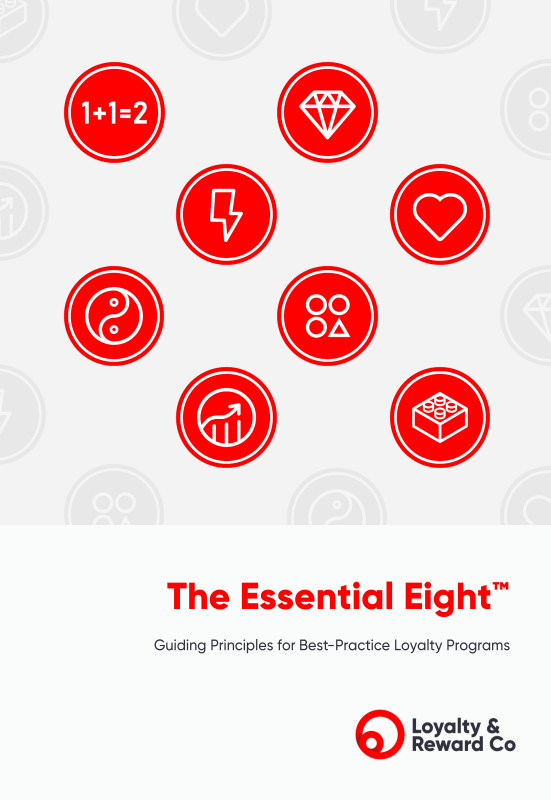
Benefits and Challenges of Loyalty Programs
Consumers
Benefits
- Value: Rewards (tangible or non-tangible) make members feel appreciated
- Exclusivity: Access to benefits that non-members don’t receive.
- Recognition: Surprise gifts or rewards offer a sense of appreciation
- Relevancy: Personalized offers and communications tailored to individual preferences
Challenges
- Perceived Value: Rewards may not feel compelling or easily accessible
- Program Overload: Consumers are often overwhelmed by the number of loyalty programs
- Marketing Fatigue: Excessive or irrelevant marketing materials can be a turn-off
- Data Privacy: Concerns over how personal data is collected and used without clear control
Companies
Benefits
- Increased Spend & Loyalty: Programs encourage more frequent and valuable transactions, reducing churn
- Member Insights: Data allows for personalised communication and offerings
- Advocacy: Delighting members can turn them into promoters
- Marketing Database: Collecting first-party data strengthens marketing efforts while cutting costs
Challenges
- Cost: Implementation and operation can be expensive, including tech, marketing, and reward costs
- Sustaining Value: Maintaining enough perceived value to keep members engaged can be difficult
- Disengagement: Over time, programs risk losing member engagement
- Competition: Continuous innovation is needed to stay relevant and competitive
Need help designing a loyalty program that works?
Looking to create a new strategy and business case for loyalty? Or struggling with engagement, program costs, or standing out in a competitive market? Our expert loyalty consultants can help you create a loyalty program that delivers real value to your customers and drives long-term business success.
Let’s work together to design a program that works for you.

